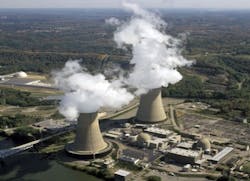Sizing instrument air supplies
Q: I’d like to ask about the engineering practice or standard to define the instrument air demand for control, shutdown (single-acting / double-acting) and blowdown valves
Ragab Abdel Fattah
Senior Instrument Engineer
Email: [email protected]
A1: One approach is to tabulate all the instruments and devices that consume air and assume (as a starting point) that each end device requires 2 scfm and account for future expansion by adding 10% for leaks and contingency.
You can, google available information at https://bit.ly/3xO0xeP.
Good luck and fill free to come back to me if you need any additional help.
Avihu Hiram
Process Control Consultant
A2: Calculate as follows:
- Control valves are considered as continuous air consumption, and the calculations are based on vendor information. Generally, we consider 10 operations per hour.
- Air consumption requirement for an on/off (shutdown/blowdown) valve for startup is taken from vendor data. To maintain the same on/off valve in open condition, continuous flow of 2 Scfm is considered.
H.S. Gambhir
Q: In the winter, when I drive or walk out from the underground level of a high-rise building, I feel the cold outside air rushing in. I have been learning about the chimney effect, and I suspect that it is pulling in the cold air. Am I right? Is there a process control method to stop that flow? Would that reduce the heating load of the building?
Z. Friedmann
Graduate student
A1: In winter the density of cold outside air is higher than inside. Since there are doors at the bottom and windows, or other openings, at the top, the chimney effect pulls in the cold outside air at the bottom. The size of the differential pressure generated by the chimney effect is a function of the temperature and humidity of the inside and outside and the height of the building. In case of tall buildings in the winter, it is in the range of about 2-10"H2O.
The cold air inflow will stop when that differential pressure is reduced to zero, which will occur when the air pressure inside the building is increased to be the same as outside air pressure at the bottom entrances. I designed such a system for the 43 story IBM headquarters building in New York in 1980. One estimate suggested that it reduced the heat load on the building 10%. If you want you can suggest to your building's operators to do the same, but first remind them to check if the windows are strong enough?
If the inside pressure on all floors is increased to match that of the outside pressure at the bottom, the windows on the upper floors must be kept closed in the winter and be strong enough for the 2-10"H2O differential pressure. This is important, because later I heard that that a design firm copied, but did not fully understand the design. So, as the winter got cold, their weak windows started popping onto the street.
As to the chimney effect, it is used in other applications. For example, in power plants where the returning warm cooling water from the plant sent to the bottom of hyperbolic, chimney-shaped cooling towers, the outside air cools and partially evaporates it before being returned as cooling water to the plant (Figure 1). The water cools as its heat content gets reduced by the large flow of the air as it leaves at the top, without requiring fans to drive the large air flow.
The chimney effect is also used in solar updraft towers (Figure 2), which convert the solar thermal energy to aerodynamic energy (wind). In this system, air is heated under a circular, greenhouse-like canopy where the sun heats the air, which rises up the tower while its aerodynamic energy is converted into electricity by driving an array of turbine generators. The first 50 kW working model was built in 1982 in Ciudad Real, Spain. The chimney of that model was 10 m (33 ft) in diameter and 195 m (640 ft) tall. The diameter of the canopy was 244 m (800 ft), covering an area of about 46,000 m2 (11 acres). This prototype operated for nine years and reached a maximum production of 50 kW.
Today, 50- to 200-MW installations are planned in Australia, China, Africa and Arizona. In Arizona, a tower twice as tall as the Empire State Building is included and expected to generate 200 MW. A plant in China is planned to consist of a 38 km2 canopy and a 1 km (0.62 mi) tall tower to provide 200,000 homes with electricity. It is expected to abate about 1 million tons of greenhouse gases and cost some $800 million. These designs are expensive. They can only be considered in areas of high solar insolation and where the land is unusable for other purposes or where the land under the canopy can be used for agricultural purposes. Design variations include the addition of thermal storage by covering the ground with heat-absorbing surfaces so that power generation can continue during the night or when the sun is not shining. Also, the designs can incorporate transpired PV collector modules was pulled into the palaces by the chimney effect to obtain additional daytime output. This same concept was also used in ancient Persia by utilizing the underground caverns from which cold air was pulled into the places by the chimney effect.
Béla Lipták
A2: You can start a blower to start outward flow to prevent cold air from entering or take a hit and heat up the cold air that entered. Wind towards the entrance will make it difficult to prevent cold air from entering. As you know, clean rooms maintain positive air pressure in the room to prevent outside air from entering.
Hiten A. Dalalleena
Sr. I&C Engineer
Pipelines chair in ISA S&S Division

